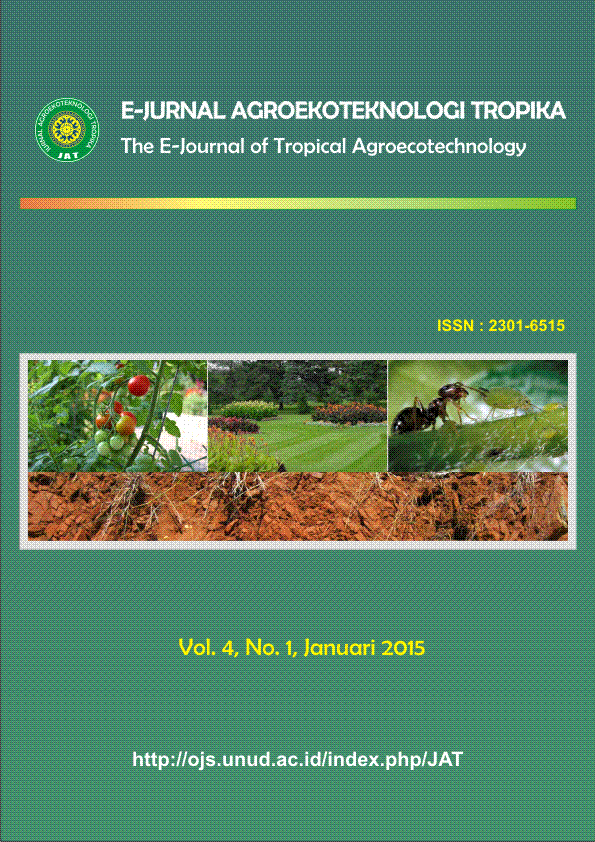Isolasi dan Karakterisasi Cendawan Mikoriza Arbuskular pada Tanah dan Akar Tanaman Jagung di Desa Sanur Kaja
Abstract
ABSTRACT
Isolation and Characterization of Mycorrhizae Arbuskular Fungi in the Soil and Roots of Corn (Zea Mays L.) in the Sanur Kaja Village
Mycorrhiza is an organism that is derived from the fungus that describes a form of symbiotic relationship between mutualisme functions with a high degree of plant roots. Benefits of mycorrhiza for plant growth and development as its host is to increase the absorption of nutrient elements of soils, as biological barrier against infection of root pathogen, enhancing the resilience of crops to drought and increasing hormone boosters grows.This research aims to identify a Arbuskular Mycorrhiza fungi isolated from corn plants rhizosphere in the village of Sanur Kaja. The results of this research show that the isolation and characterization of spores that develop on the roots of corn in the village of Sanur Kaja indicates a growing spores there is the genus Glomus sp. type of Spore that successfully identified a species of Glomus sp-1, Glomus sp-2, Glomus sp-3.
Key words:Glomus sp, rhizosphere, symbiotic mutualisme


